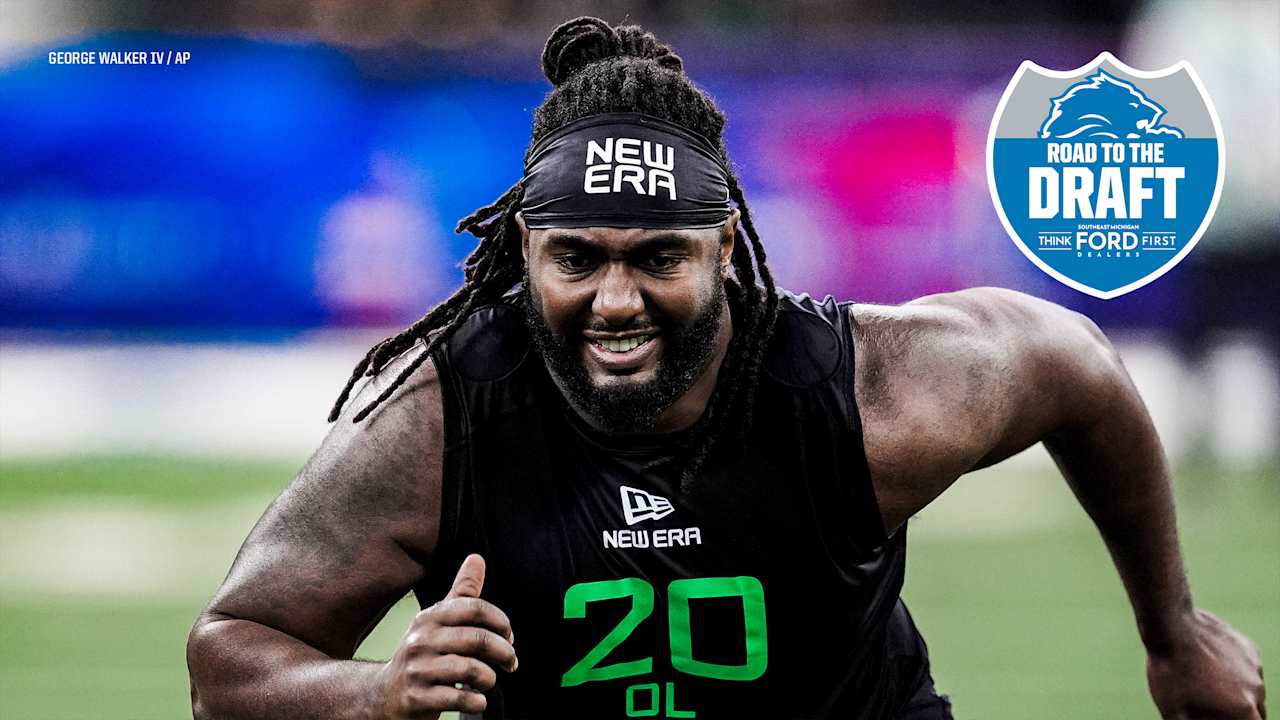15 cut candidates for the 2025 NFL offseason

Estimated reading time: 7 minutes
As the start of the NFL’s official negotiating window is only 20 days away, teams are firmly focused on how to maximize their cap space. Cutting underperforming players on large deals is a simple way to generate more spending money while simultaneously easing some financial headaches down the line. Last week alone, cuts began in earnest, featuring RB Raheem Mostert, CB Kendall Fuller and EDGE Preston Smith, and more will assuredly follow suit in short order. Below are 15 names with a strong chance of being released.
Dl Sheldon Rankins, Cincinnati Bengals
As the Bengals look to retain Tee Higgins and upgrade their defense, they’d be wise to shed some deadweight on a unit that finished 28th in success rate allowed. Rankins played only 287 total snaps this past season, posting only four pressures and a subpar 46.2 PFF run-defense grade. Not only is Cincinnati likely to better its interior defensive line through the draft, but cutting Rankings would save $9.6 million. This feels like a no-brainer.
EDGE Von Miller, Buffalo Bills
Miller was highly effective when on the field for the Bills last year, turning in an 84.5 PFF pass-rushing grade with an 18.4% pass-rush win rate. However, he’s played under 500 snaps in three straight seasons, meaning his productivity is unreliable. Currently sitting $16 million below in cap space, the Bills will need to do some retooling in order to fortify their wayward defense. Considering that Miller is 36 years old, counts for over $23 million against the cap this year and could save roughly $8.4 million if cut, releasing the future Hall of Famer to get younger at edge rusher probably makes the most sense.
Dl Larry Ogunjobi, Pittsburgh Steelers
The Steelers boasted one of the best defensive lines in the NFL this past year, but Ogunjobi didn’t exactly hold up his end of the bargain. Across 550 snaps, Ogunjobi produced only a 48.3 overall PFF grade, including a 41.6 PFF run-defense grade and a mediocre 16 pressures. When the Steelers re-signed Ogunjobi to a three-year, $28.75 million contract, they certainly expected more than they have received. Releasing Ogunjobi would save $7 million while simultaneously enabling an upgrade next to Cameron Heyward, presumably through a very deep interior defender draft class.
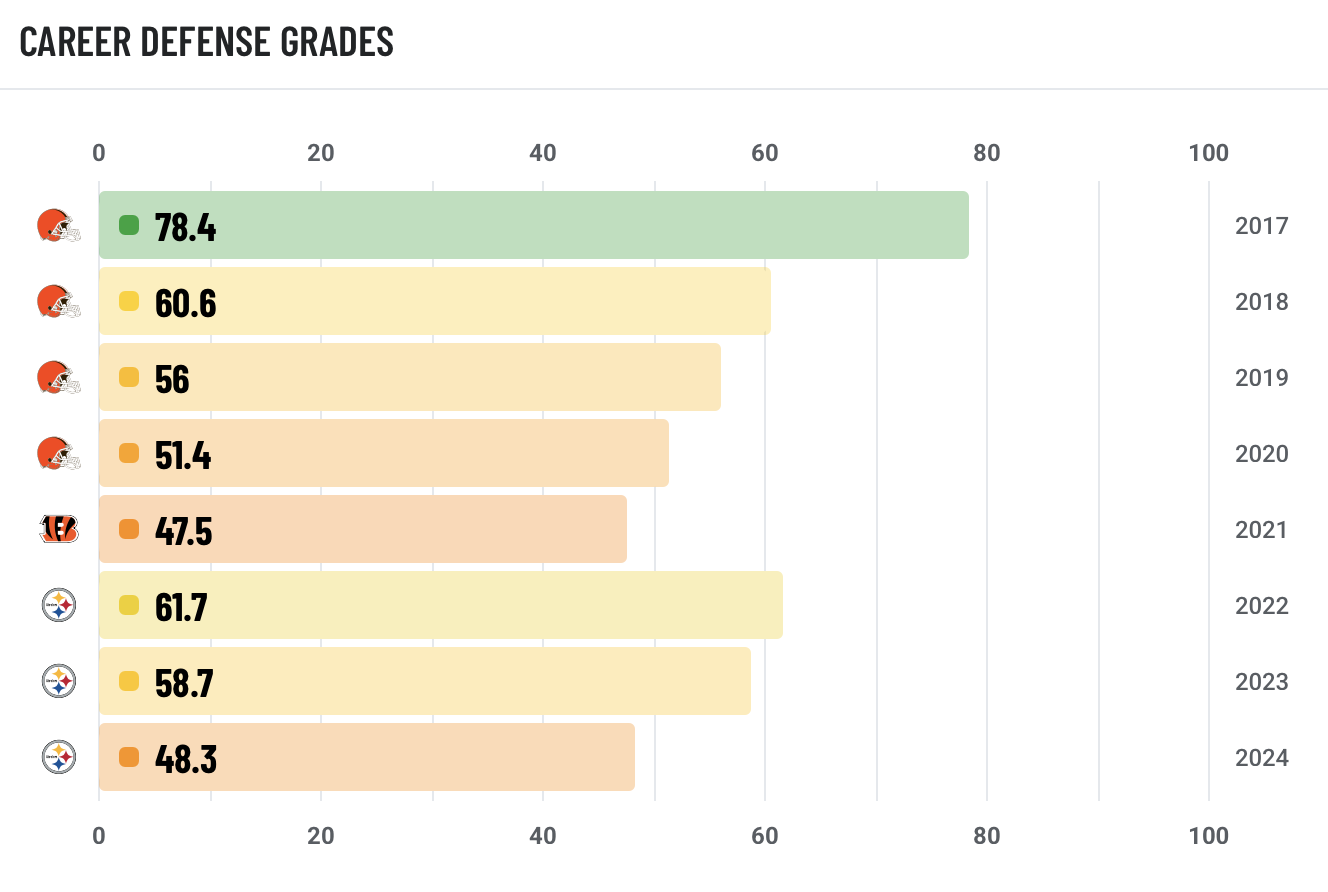
Dl Grady Jarrett, Atlanta Falcons
Jarrett has long been a staple on Atlanta’s defense, but his on-field production isn’t matching his star power anymore. Last year, Jarrett’s 60.6 PFF pass-rushing grade was a career low, and his 61.5 PFF run-defense grade was also below average. The offseason priority for Atlanta will be bolstering its defense, particularly its defensive line. Cutting the soon-to-be 32-year-old Jarrett would free up $16.25 million and allow for a natural takeover of the reins.
EDGE Sam Hubbard, Cincinnati Bengals
Another Bengals defensive lineman who underwhelmed as part of a bad overall unit, Hubbard struggled big time in 2024. His 6.3% pass-rush win rate was his lowest since 2020, and his 58.9 overall PFF grade was a career-worst. Assuming that Cincinnati can iron out a deal with sack leader Trey Hendrickson, the Bengals will still possess one of the NFL’s foremost edge defenders. However, it’s clear that Cincy can find a better running mate for Hendrickson. Cutting Hubbard would save $9.5 million — further helping to offset Higgins’ projected $25 million or more in 2025 alone — and foster just that.
EDGE Cameron Jordan, New Orleans Saints
The Saints’ annual trip to cap hell is upon us once more. Restructuring Derek Carr’s contract (if he stays in New Orleans) could free up $30 million, but the team will still have to dig to clear its $54 million deficit. Cutting Jordan, particularly after June 1, would be a logical step in addressing that. The 2024 season didn’t go as planned for the franchise legend, who finished with a 54.3 PFF pass-rushing grade and a career-worst 54.4 PFF run-defense grade. Jordan was effectively relegated to backup duties behind Carl Granderson and Chase Young, too. Cutting Jordan after June 1 would save $11 million, as opposed to costing the Saints roughly $3 million if moving on before then.
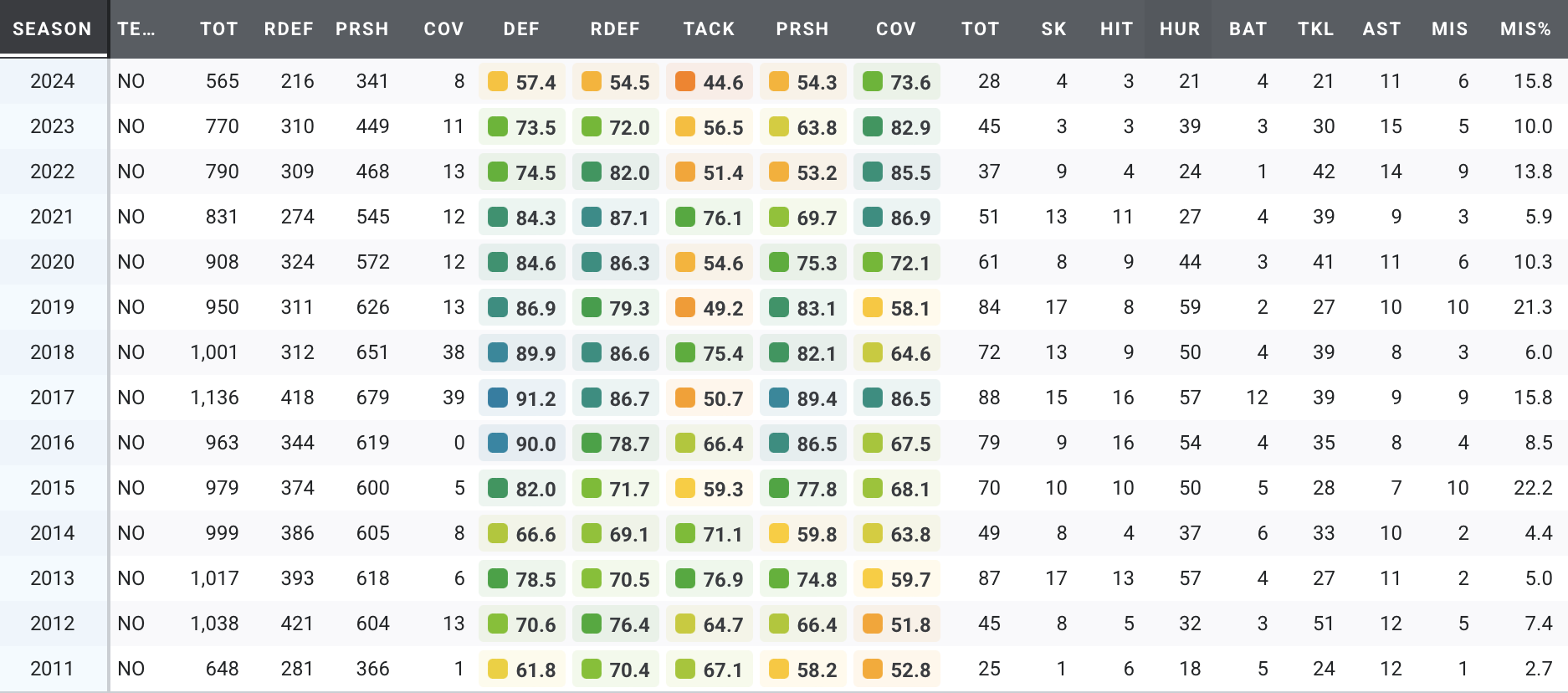
WR Christian Kirk, Jacksonville Jaguars
The Jaguars’ forthcoming hire at general manager will inherit a swamp of tough contracts, with Kirk’s close to topping the list. During an injury-shortened 2024, Kirk generated only a 68.2 PFF receiving grade and 1.72 yards per route run, his worst in both categories since 2020. Jacksonville will bring back star rookie Brian Thomas Jr. and likely one of Gabe Davis or Kirk, but cutting Kirk holds much greater financial benefits — set to save the team $10.4 million. Executing a trade for the former Cardinal would also be in play, but if no suitors arise, then removing his $24 million cap hit outright is in play.
EDGE Denico Autry, Houston Texans
Houston’s group of edge rushers finished the year third in overall PFF grade and fourth in pass-rushing grade, primarily fueled by Danielle Hunter and Will Anderson Jr. Autry did play a role, but his 65.2 PFF pass-rushing grade was the worst among Houston’s primary four edge defenders. On top of that, Autry closed the year with a sub-55.0 grade in both run defense and tackling. Autry is set to count for over $10 million against the cap this year, but that price feels far too rich for a rotational edge piece. Moving on in favor of a cheaper depth player would net Houston roughly $5.8 million — money that would certainly alleviate limited cap room.
WR Allen Lazard, New York Jets
Aaron Rodgers’ tenure in New York has come to an unceremonious end, which could very well mean the departure of some of his staple targets. In two years with the Jets, Lazard posted a middling 63.9 PFF receiving grade with only 1.21 yards per route run and a fourth-percentile separation mark. As new general manager Darren Mougey looks to revise his roster, releasing Lazard is feasible given that the move would free $6.6 million.
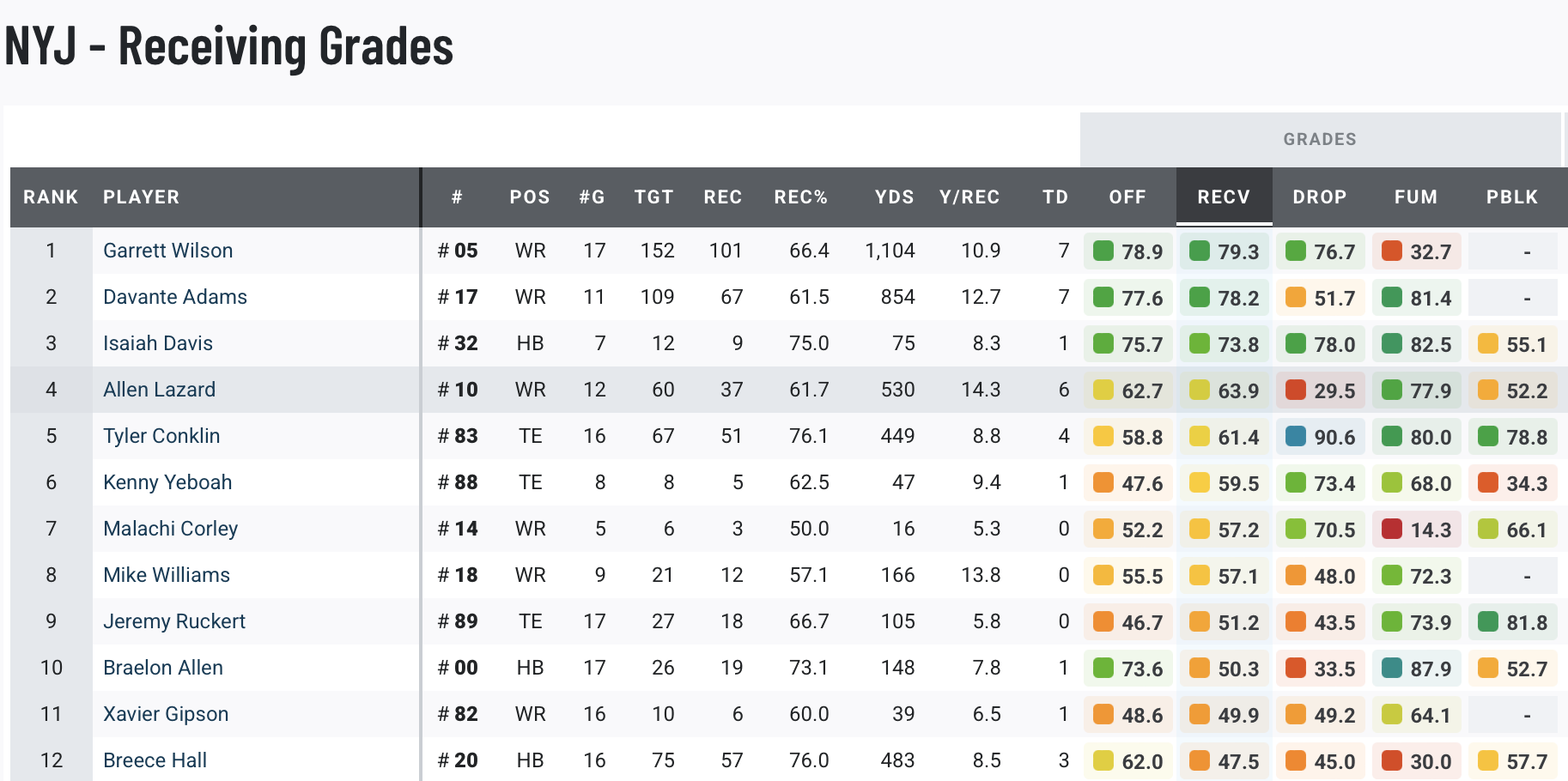
TE Noah Fant, Seattle Seahawks
Seattle’s offense leaned conspicuously heavily on rookie A.J. Barner last season, which might be an ominous sign of things to come for Fant. The 27-year-old turned in a solid 70.2 PFF receiving grade, but his 34.5 PFF pass-blocking mark was the sixth-worst among qualifying tight ends. Given that Fant will be a free agent next offseason and that cutting him would clear $8.9 million, moving on might be the ideal play. After all, Seattle appears likely to keep deploying Barner and could land one of several intriguing tight ends in the draft.
Dl Raekwon Davis, Indianapolis Colts
Indianapolis’ defensive line is in a bit of an odd place next season, as several starters are set to return but some more juice is likely needed. This past year, Davis was responsible for some of those woes, turning in only four pressures and a 38.5 PFF run-defense grade on 349 total snaps. Releasing Davis before June 1 would grant the Colts around $6.5 million. Plus, Indy is a definite candidate to take advantage of the talented IDL draft class, as previously discussed.
EDGE D.J. Wonnum, Carolina Panthers
Carolina urgently needs more pass-rushing help after ranking dead last as a team in that category last year. Wonnum didn’t make a drastic difference in his first season in Carolina, turning in only 26 pressures and a 56.4 PFF pass-rushing grade. Jadeveon Clowney should be back with the Panthers, but assuming the team lands someone else to play beside him, that would relegate Wonnum to a backup role. That would only add incentive to cut Wonnum after only one year and save $6.2 million in the process.
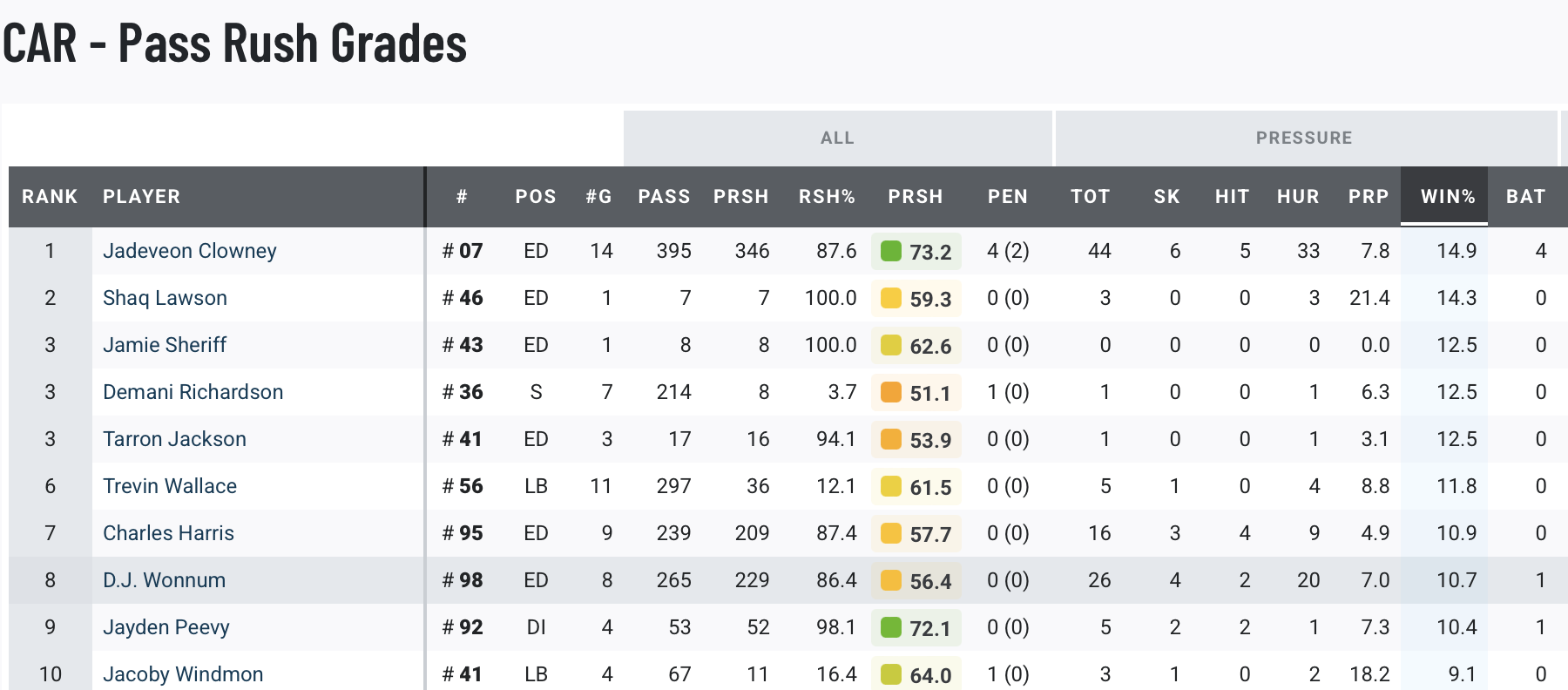
OG Wyatt Teller, Cleveland Browns
Although the Browns boast the No. 2 overall pick in the draft, their offseason situation isn’t exactly enviable. The team must navigate a pending trade request from Myles Garrett, plus getting out from -$31 million in cap space. There aren’t many clear ways to revise that with cuts, but releasing Teller after June 1 could work. Last year, the 30-year-old posted only a 62.6 overall PFF grade, his lowest since 2019. Factoring in Cleveland’s need for OL upgrades, as well as Teller’s injuries and declining play, that could warrant making the sacrifice there.
ILB Cole Holcomb, Pittsburgh Steelers
Even though Elandon Roberts will be a free agent, Pittsburgh’s inside linebacking room appears to have its two clear-cut starters via Patrick Queen and Payton Wilson. That would theoretically make Holcomb movable this offseason. The 28-year-old missed all of 2024 with a knee injury and generated only a 65.5 overall PFF grade during a shortened 2023 in the Steel City. Unfortunately, Holcomb’s health and role don’t equate to his $7.6 million cap hit. Releasing the veteran would save Pittsburgh $6 million.
TE Gerald Everett, Chicago Bears
During his last two seasons in Detroit, Ben Johnson dialed up the fourth-most plays with two tight ends on the field. The Bears already have one viable option in Cole Kmet, but Johnson will presumably want to upgrade from Everett. After inking a two-year, $12 million deal with Chicago in 2024, Everett played only 247 snaps and was targeted just 12 times, good for a 41.5 PFF receiving grade. Releasing the 30-year-old would free up $5.5 million in cap space and the pursuit of a better player like Mike Gesicki or Tyler Conklin.
Related
NFL star intends to make shock return to football after…
By JAKE FENNER Published: 14:06 GMT, 8 March 2025 | Updated: 14:06 GMT, 8 March 2025 After
New York Jets Launch Year Three of NFL Girls Flag…
The New York Jets are delighted to announce the return of its highly successful Jets NFL Girls Flag league in London ahead of International Women's Day.
MOCK DRAFT WATCH: Interior OL emerges as top pick for…
Trevor Sikkema, Pro Football Focus: James Pearce Jr., Edge, Tennessee Why: Pearce had an incredibly impressive combine showing in the speed drills,
Shedeur Sanders places blame on media, says perceived drop in…
Former Colorado quarterback Shedeur Sanders opted out of throwing passes at last week's NFL Scouting Combine. He did, however, travel to Indianapolis and condu


